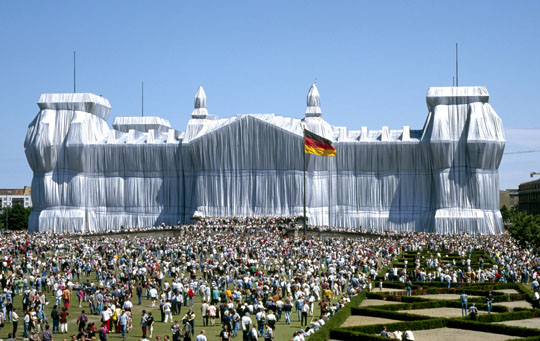"When you go out on the street and walk on the sidewalk, someone has decided where the sidewalk is. You take your car and drive the car; someone decided the roadway — you have a red light and a green light. Actually, we are funneled 24-hours around the clock through highly regulated spaces designed by urban planners. We don't even think about how we are controlled by these spaces," muses the artist Christo at a recent interview at 21_21 Design Sight in Tokyo's Midtown. "What we do, Jeanne-Claude and myself, we borrow that space and create gentle disturbances for a few days."
Christo and his wife Jeanne-Claude have worked together on some of the world's most high-profile and unusual public art works since the 1970s. In 1983, the two surrounded the shores of 11 islands in Biscayne Bay, Florida, with bright pink polypropylene. In Berlin in 1995, they wrapped the Reichstag, the home of the German parliament, in billowing white fabric. Most recently, they placed 7,503 orange "gates" in New York's Central Park for 16 days. Such projects are designed to refresh people's assumptions about these spaces.
"If you are familiar with the Reichstag, it is a typical Victorian building. It has ornaments, decoration, all kinds of decorative parts of the structure," says Christo. "All that was hidden by 100,000 sq.-meters of fabric, so when you see the 'Wrapped Reichstag,' you only see the principle elements of the building: its towers, its proportions. . . . All our projects are like this — living objects, moving with the wind."


















With your current subscription plan you can comment on stories. However, before writing your first comment, please create a display name in the Profile section of your subscriber account page.